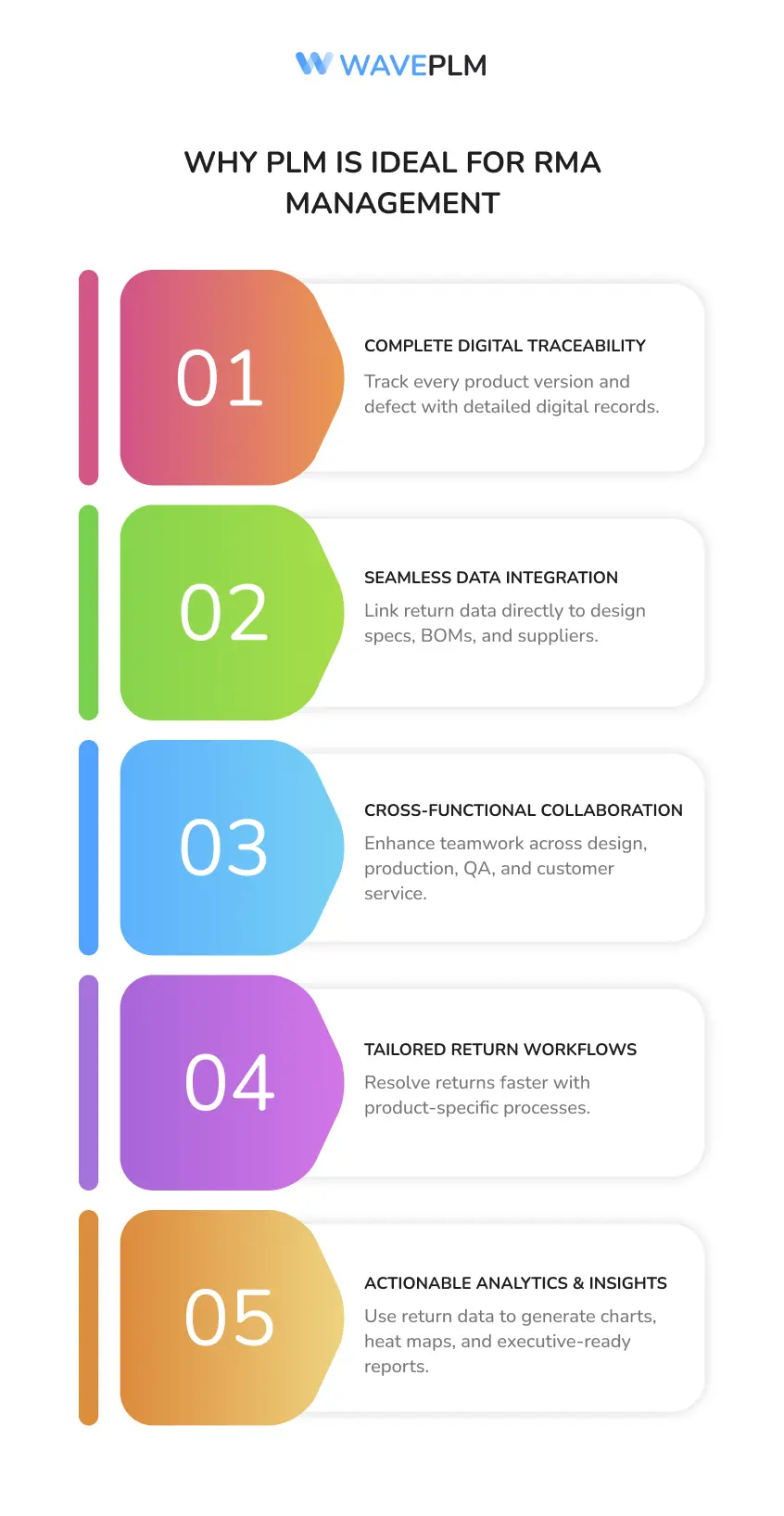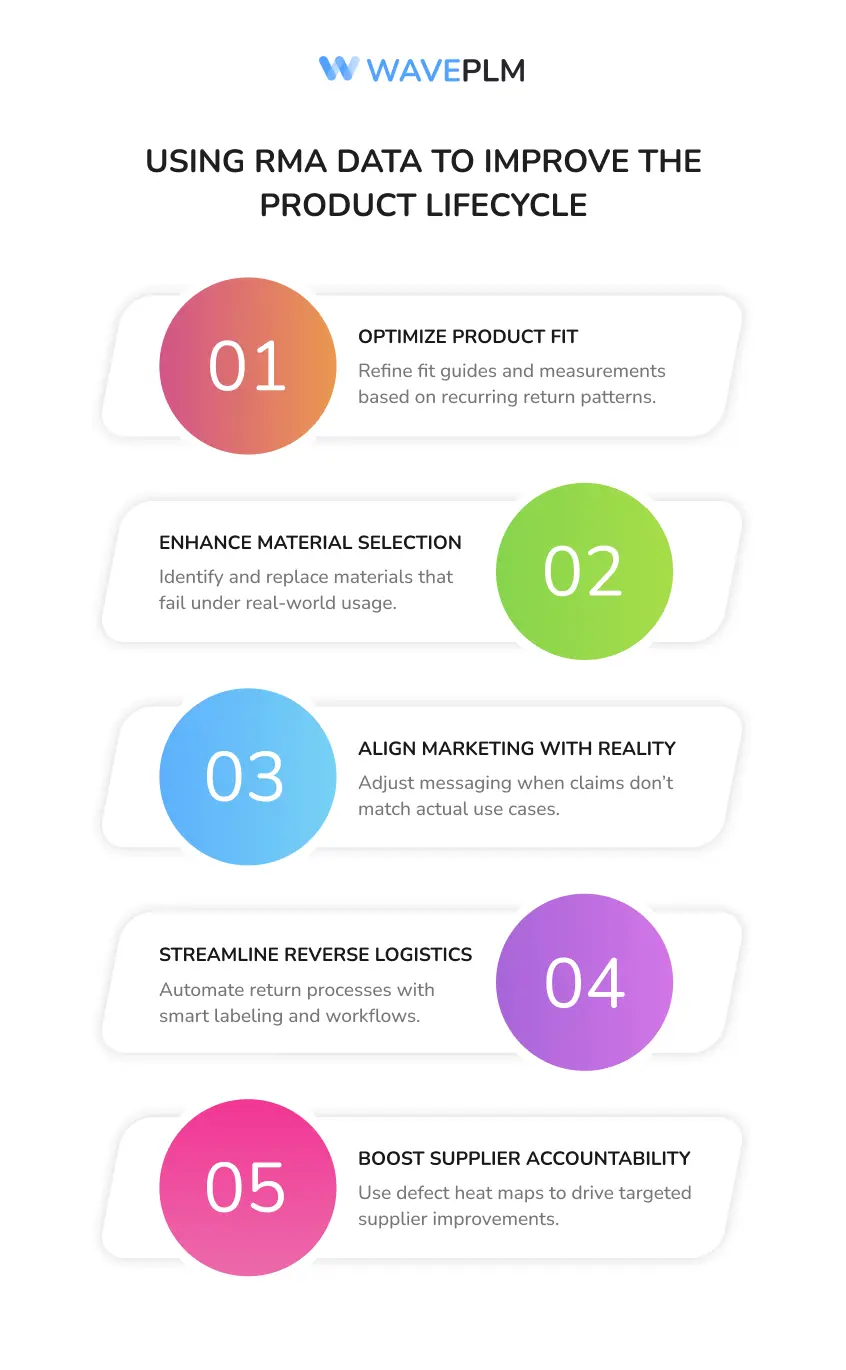
What is RMA and Why It’s Crucial for High-Performance Apparel
RMA stands for Return Merchandise Authorization. It is a structured and standardized process used by manufacturers to authorize, process, and manage returned products. The RMA definition covers everything from initial return requests to return shipping, inspection, and issue resolution. It ensures every return is properly documented, tracked, and resolved efficiently.
In the context of performance wear and accessories, RMA processes are vital. These products are designed for intense physical activity, environmental exposure, and long-term use. When customers return a product due to defects or dissatisfaction, it’s essential to manage the situation fast and professionally. A single return can influence how a customer views a brand, so the process must be as smooth and responsive as possible.
A strong RMA in manufacturing framework ensures:
- Better management of warranty claims, offering timely support for defective or underperforming products
- Organized defect tracking, helping manufacturers identify patterns or repeat issues
- Smooth handling of reverse logistics, reducing delays and bottlenecks in supply chains
- Increased customer satisfaction, encouraging loyalty and word-of-mouth marketing
- Greater supply chain management accuracy with faster data circulation and accountability
Proactively managing returns also supports internal optimization. Teams can redesign flawed components, enhance quality assurance procedures, and ultimately improve products across future collections.
Common Return Reasons in Performance Wear and Accessories
Returns come from many factors in the performance apparel segment. Some returns are due to customer expectations, while others point to deeper product issues. Understanding return reasons helps refine design and fulfillment strategies and minimize costs.
| Return Reason | Explanation |
|---|---|
| Defective products | Malfunctioning zippers, torn seams, leaking waterproof layers |
| Wrong sizing or fit | Discrepancies in product measurements or sizing charts |
| Color mismatch | Products look different than expected due to screen variance or dye issues |
| Functional failure | Thermal clothing doesn’t retain heat, sweat-wicking garments underperform |
| Damage during shipping | Items crushed, dampened, or torn due to poor packaging or mishandling |
| Mislabeling or wrong item | Receiving incorrect item or size due to fulfillment mistakes |
| Wearability dissatisfaction | Garments feel uncomfortable, stiff, or too heavy for intended use |
| Quality below expectations | Customers expected better performance based on brand promise or reviews |
Knowing why items come back allows brands to take corrective action. This can include updating product pages with clearer sizing info, redesigning weak components, or switching suppliers.
Managing RMA with PLM Systems: Tracking, Documentation, and Resolution
A Product Lifecycle Management system (PLM) manages all product data from concept through post-sale. Integrating RMA processes into a PLM platform creates a closed-loop system where returns influence future improvements.
Why PLM is Ideal for RMA Management
- Creates digital records for every product version and defect history
- Connects return data directly to design specs, BOMs, and supplier sources
- Improves collaboration between design, production, customer service, and QA
- Allows teams to resolve returns using workflows customized for each product type
- Generates return analytics, charts, and heat maps for better executive decisions
| PLM Feature | Benefit |
|---|---|
| Digital documentation | Accessible by all departments; links return reason to design issue |
| Full traceability | Backtracks defect to raw material batch, supplier, or machine process |
| Team collaboration | Connects R&D, support, sourcing, and shipping through one platform |
| Lifecycle reporting | Identifies product lines with high return rates |
| Warranty claim integration | Merges warranty data with product structure to speed resolution |
With PLM for performance wear and accessories, returns are not just managed—they are transformed into insights that save costs and enhance quality.

RMA Number Definition and Workflow Steps
What is an RMA Number?
The RMA number definition refers to the unique reference ID assigned to a customer return. This ID is used to log, track, and resolve the return process across departments. It’s vital for record-keeping, resolution speed, and data mining.
What Does an RMA Mean in the Business Workflow?
An RMA represents the brand’s formal agreement to receive and process a returned item. It marks the beginning of the return shipping process, internal inspection, and eventual repair, refund, or exchange. It helps teams prioritize returns and ensure compliance.
PLM-Based RMA Workflow:
- Customer initiates return request online or via customer support
- Customer support logs the issue and generates an RMA number in PLM
- Return instructions sent, item is shipped back or dropped off
- Item received and inspected, issue logged against BOM in PLM
- Action determined (repair, replace, refund, escalate to design)
- Resolution executed, with notes saved for future analysis
- RMA closed once completed, report sent to involved teams
This flow supports supply chains by reducing delays and improving internal communications.
Case Study: Streamlining Warranty Claims with PLM
A well-known sportswear brand with a global presence faced challenges managing product returns. Thermal outerwear and compression gear had high defect rates, but scattered systems made it hard to understand root causes.
They adopted Wave PLM to integrate their RMA system.
Challenges Before PLM:
- Return records spread across email, Excel, and customer service platforms
- No central record of defective products and related orders
- Long lead times in addressing warranty issues
- Low visibility into vendor contributions to quality issues
Solutions After PLM Implementation:
- Unified return intake, inspection, and repair logs
- Return analytics dashboards to identify top 10 product issues
- Customer feedback embedded into PLM product records
- Supplier accountability added through return reason tracking
- Historical RMA data aligned with product development for planning
Outcomes:
- 22% fewer returns in two seasons
- 18% boost in customer satisfaction due to faster turnarounds
- 40% faster RMA cycle time
- 15% cost savings on processing and replacement
- Sharper focus on product-market fit using return insights
This case illustrates how a modern RMA system improves not just logistics but also quality, planning, and profitability.
RMA Templates and Return Forms for Teams
Streamlined intake forms help teams process RMAs with fewer errors and delays. Here’s a ready-to-use RMA form that works well with any PLM system:
Performance Wear RMA Intake Template
| Field | Description |
|---|---|
| RMA Number | Auto-generated ID to track return |
| Customer Name | Person submitting the request |
| Product SKU | Exact product variation |
| Order Number | Transaction identifier |
| Return Reason | Select from predefined options (defective, wrong size, etc.) |
| Purchase Date | Original sale date |
| Return Date | Date product was shipped back |
| Condition on Arrival | New, lightly worn, damaged |
| Preferred Resolution | Repair, refund, exchange |
| Inspection Notes | Summary of findings from QA team |
| Photos Uploaded | Visual proof of defect or packaging damage |
This structure supports consistency, better reporting, and easier process automation.
Using RMA Data to Improve the Product Lifecycle
Every return contains value. When collected and used properly, return data can power smarter decisions across the product lifecycle:
- Update fit guides or pattern measurements after repeat returns
- Replace materials that fail under real-world conditions
- Adjust product marketing based on mismatch between claims and use cases
- Improve reverse logistics by creating auto-label workflows
- Drive supplier performance improvements with defect heat maps
By integrating RMA insights, your brand can reduce costs, improve time-to-market, and increase long-term profitability.

Final Thoughts: How Smarter RMA Can Drive Growth
Managing returns is not just about fixing what went wrong. It’s about using feedback to build something better. When RMA processes are built into your fashion PLM system, returns become a powerful business intelligence tool.
You can:
- Track and improve product design based on real feedback
- Maintain excellent service standards with minimal overhead
- Strengthen supply chains with transparent return data
- Use data to create cost-effective and customer-aligned collections
- Build loyalty by consistently delivering on performance expectations
For any brand in performance wear and accessories, a solid RMA strategy is more than an operational requirement—it’s a competitive advantage.





Leave a Reply